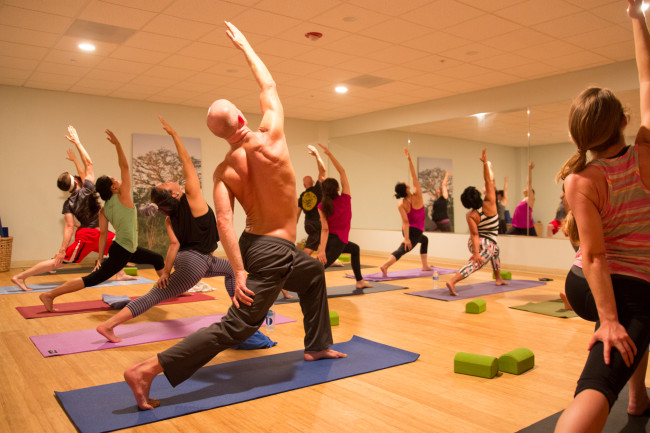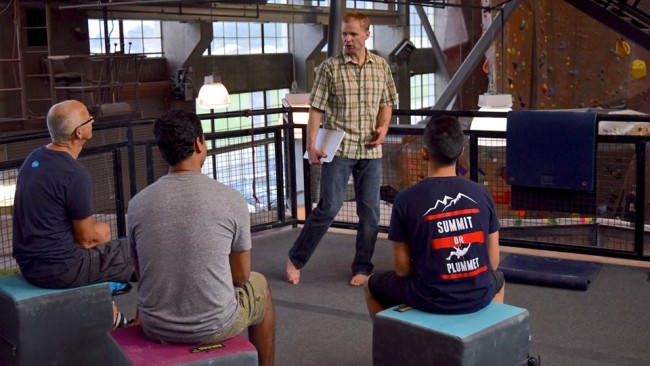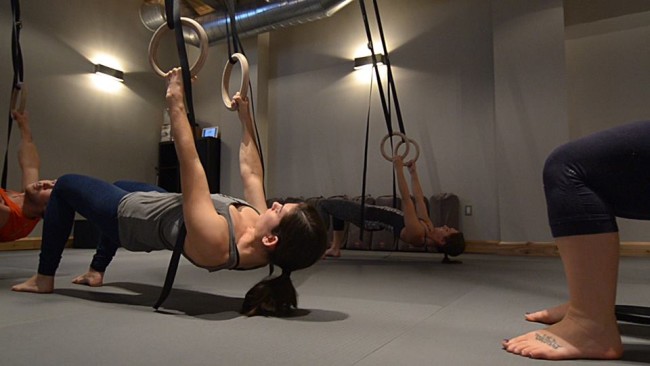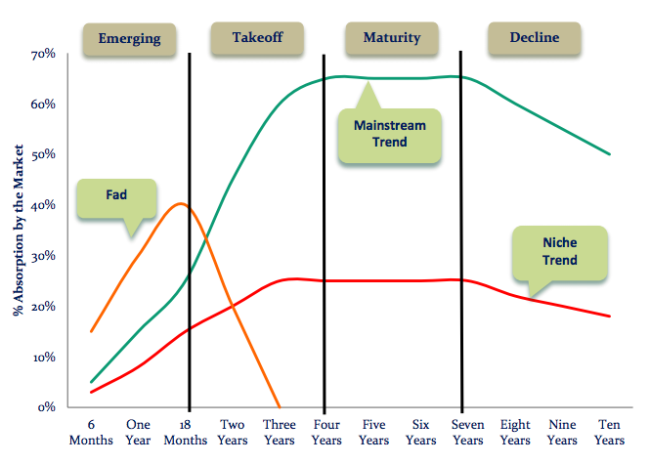
Yoga, treadmills and small group training are here to stay and if you’re not providing them in your gym, you missing out. At least that’s according to a recent report released earlier this fall by the International Health, Racquet and Sportsclub Association (IHRSA), the American Council on Exercise (ACE) and ClubIntel.
The International Fitness Industry Trend Report explores the offerings of fitness professionals and gym operators around the world and quantifies the data to reflect growth in trends over the past two years. Though it was an international study over 90% of responses came from the USA.
The study measured adoption and growth rates from 2013 to 2015 across multiple health and fitness categories including: equipment, facilities, programs, services, training protocols, and technology. The report broke down each trend by its level of adoption: niche (fad), emerging, growing or mature.
Though the study focused on traditional health and fitness center operations, the implications for climbing and bouldering gyms should not be overlooked.

Mature Trends
Group cycling and traditional yoga are the only fitness trends that have reached the mature stage of their lifecycle. The report states that the implication is that while these programs have a powerful influence on programming in the industry they are not likely to grow much moving forward.
Climbing and yoga are symbiotic activities, and climbing gyms have been enthusiastically adding yoga to their offerings over the last 5 years. Climbing gym operators are building separate, purpose-built yoga studios into their new facilities, and are staffing them with experienced and highly trained yoga professionals. Though yoga is becoming more popular in climbing gyms and operators are seeing good returns, we’re still a long ways from tapping out the potential that yoga can bring to the climbing gym.
Growth Trends
Personal training was shown to have the highest adoption rate of any program or service in the fitness industry. Climbing gyms are a little behind the times on this one. Perhaps due to the nature of climbing and climbers’ independent streak, personal training is rare in climbing gyms but not unknown.
Boot Camp-style training, small group training, HIIT group exercise classes and functional resistance training have all achieved a high level of adoption in the industry and continue to show above average growth making them growth trends.
According to the report the following activities are poised for significant growth: Personal Training (individual) • Free weight training (individual or group) • Bodyweight resistance training • Functional resistance training • Boot Camp-style conditioning classes • Senior fitness programs • Small group fee-based personal training (six or fewer) • HIIT group exercise classes (more than six).
This shows is that health conscious customers are craving personal and group training, which could add a sizable new revenue source for climbing gym operators.

The report also highlighted several types of equipment that are growing in popularity: Flexibility/mobility equipment (foam rollers, stretch trainers and myofascial release devices) • Traditional functional fitness equipment and accessories (medicine balls, stability balls, BOSU, balance boards, etc.) • Automated External Defibrillator (AED) • Treadmills • Elliptical trainers • Upright bicycles • Suspension training equipment (TRX or similar) • Non-traditional functional training equipment (Kettlebells, Indian Clubs, tires, ropes, kegs, sandbags, sandbells, etc.) • Stretching zones
Although you might assume treadmills, elliptical trainers and upright bicycles would be at the mature stage of their lifecycle, the survey indicates that at least for the last two years these tools have experienced a resurgence.
Also in the equipment category was suspension training equipment (e.g. TRX or similar). To this we could add gymnastic rings and hangboards which have seen a rise over the last two years in their adoption by both manufactures and operators.
Emerging Trends
All of the technology trends fell within the emerging category. Trends such as online pricing transparency, online registration and reservations for programs, selling memberships online, virtual training and mobile applications all have an opportunity to gain significantly greater adoption by the health and fitness industry.
Online price transparency, though rare for fitness clubs, has been a part of the climbing gym culture from the beginning and should continue into the foreseeable future. Thanks to recent innovations with Rock Gym Pro software, online registration and reservations are definitely an emerging trend in the climbing world. Likewise, online waivers filled out at home or with a tablet at the gym are quickly replacing pen & paper waivers.

Outside the technology realm, the report identified many other emerging fitness trends: Suspension training classes (TRX, Jungle Gym, etc.) • HIIT small group training (six or fewer individuals) • Fusion-style group exercise classes • Nutritional counseling and coaching • Youth fitness programs • Health coaching/wellness coaching (one-on-one or groups) • Youth personal training • Sports specific performance training • Traditional endurance training programs • Medical-fitness based programs • Barre classes • Non-traditional/Adventure Training Programs • Functional training zones
Suspension training shows up again in the emerging category, but this time it’s in the form of organized classes. We are already seeing this type of activity in a few climbing gyms that are offering group TRX and rings classes.
Youth fitness and youth personal training are an emerging trend in both health clubs and the climbing gym industry. Youth climbing teams, however, may be more accurately classified as a growth trend with almost all commercial climbing facilities offering some kind of competitive team. Youth personal training is seeing an uptick in larger markets.

Fad or Trend?
Many people may confuse a fad with a trend and vice versa. The authors of the study noted this confusion and went to pains explain the difference. Fads are events; short-term phenomena that arise quickly, take the world by storm and just as quickly fade into obscurity. In business they have been known to create mercurial success and mercurial failure. In social spheres, fads have created short-term changes in social consciousness that just as quickly became forgotten.
Fads are a virus that can quickly take over business thinking, sometimes generating short-term profit and more often than not, causing permanent harm. Consequently, as business operators it is vital to see fads for what they are and not incorporate them into your business strategy.
An example of a fad showing up in climbing gyms right now is the rise of ninja warrior courses and classes. It’s true that this style of fitness is very hot right now (and pretty fun) but it is unlikely that ninja warrior training will be around in three years. Is it OK to make some money off this fad? Definitely, but be careful not to put all your eggs in the ninja basket until you’re sure it’s moved from fad to emerging trend.
On the other hand, group instruction and youth training centers are niche trends that are evolving into movements in the indoor climbing industry. Trends have the ability to gain momentum and create long-term societal and business impact. Trends have vitality, often ingraining themselves within the cultural roots of society, whether it is a social trend or a business trend. The power of a trend can manifest itself in the attitudes, values and behaviors of its audience.

Climbing Business Journal is an independent news outlet dedicated to covering the indoor climbing industry. Here you will find the latest coverage of climbing industry news, gym developments, industry best practices, risk management, climbing competitions, youth coaching and routesetting. Have an article idea? CBJ loves to hear from readers like you!






